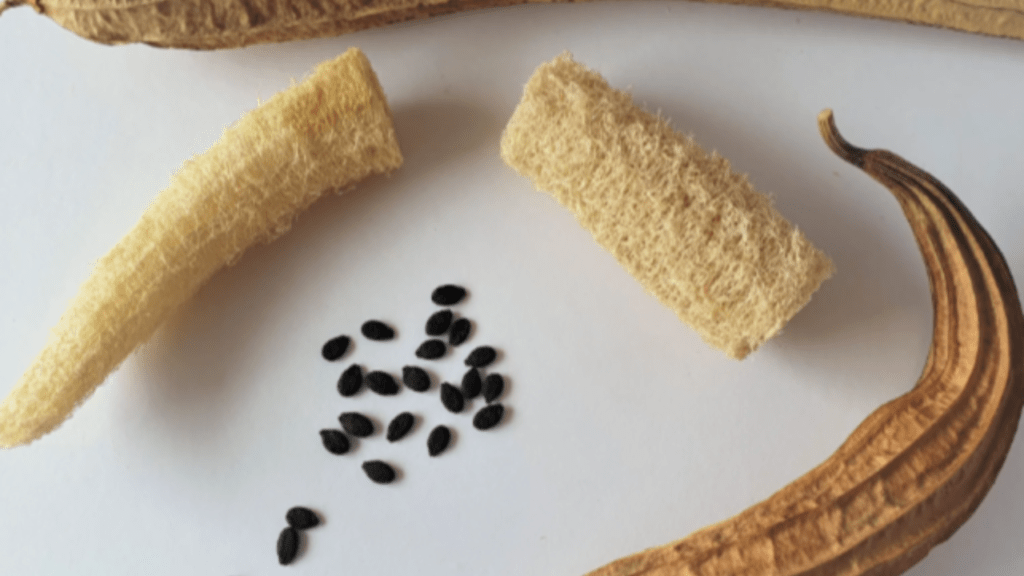
How to Grow and Harvest Luffa Plant Seeds: A Complete Guide
Growing and harvesting luffa plant seeds can be a rewarding and enjoyable experience for any gardener. In this complete guide, we will walk you through the entire process, from planting the seeds to caring for the plant, and finally harvesting the seeds for future planting. Whether you’re a beginner or an experienced gardener, this guide will provide you with all the information you need to successfully grow and harvest luffa plant seeds. So let’s get started!
Luffa plants are a unique and versatile addition to any garden. Not only do they produce the sponges that are commonly used in the bathroom, but they also produce edible fruits that can be used in a variety of culinary dishes. If you’re interested in growing luffa plants in your garden, it’s important to understand the process of growing and harvesting the seeds. The first step in growing luffa plant seeds is to plant the seeds in well-drained soil. Luffa plants thrive in warm and sunny environments, so it’s important to choose a location in your garden that receives plenty of sunlight. Once you’ve planted the seeds, be sure to water them regularly and provide them with the proper nutrients to help them grow. As the plants begin to grow, you’ll need to provide them with a trellis or other support to help them climb and produce their unique fruits. Once the fruits have reached maturity, you can harvest the seeds and save them for future planting. By following these steps and providing the proper care, you can successfully grow and harvest luffa plant seeds in your own garden.
Table of Contents
ToggleUnderstanding Luffa Plants
Luffa plants are a unique addition to any garden, and understanding the process of growing and harvesting the seeds is important for a successful harvest. To start, it’s crucial to plant the seeds in well-drained soil and ensure they receive plenty of sunlight. Regular watering and proper nutrients are essential for the plants to thrive. As the plants grow, providing them with a trellis or support will help them climb and produce their distinct fruits. Once the fruits have reached maturity, the seeds can be harvested and saved for future planting. By following these steps and providing the proper care, you can successfully grow and harvest luffa plant seeds in your own garden.
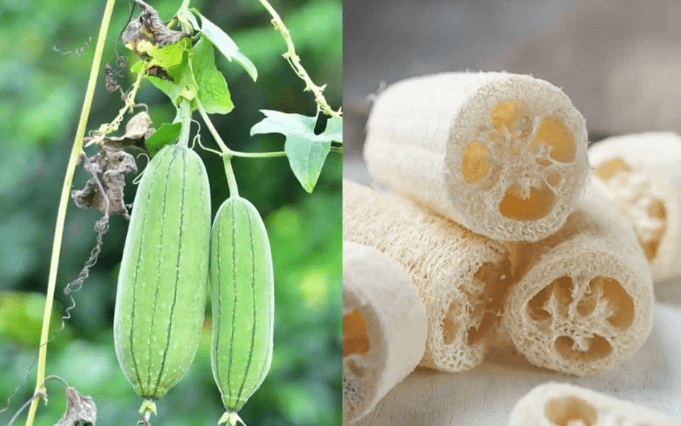
Describe the luffa plant, its characteristics, and types.
Luffa plants, also known as loofah or sponge gourd, are a unique addition to any garden. They are fast-growing vines that can reach up to 30 feet in length and produce large, yellow flowers. The fruits of the luffa plant are long and cylindrical, with a rough, fibrous texture. There are two main types of luffa plants: angled luffa and smooth luffa. Angled luffa has ridges along its length, while smooth luffa is more cylindrical and lacks the ridges. Both types of luffa are commonly used for their fibrous interior, which can be dried and used as a natural sponge. Luffa plants are also grown for their edible fruits, which can be harvested when young and tender. By understanding the characteristics and types of luffa plants, you can successfully grow and harvest them in your own garden.
Discuss the common uses of luffa sponges in everyday life.
Luffa sponges, also known as loofah sponges, have a variety of common uses in everyday life. One of the most well-known uses is as a natural exfoliating sponge for the skin. The fibrous texture of the luffa sponge helps to slough away dead skin cells, leaving your skin smooth and revitalized. In addition to being used as a skin exfoliant, luffa sponges can also be used as a kitchen scrubber. The rough texture makes them great for scrubbing dishes, countertops, and other surfaces. They are also eco-friendly and biodegradable, making them a sustainable choice for household cleaning. In some cultures, luffa sponges are even used as a natural shower loofah for bathing. Their absorbent and exfoliating qualities make them a popular choice for daily hygiene routines. With their versatility and sustainability, luffa sponges are a practical and environmentally-friendly option for a variety of uses in everyday life.
Benefits of Growing Luffa Plants from Seeds
Highlight the advantages of growing luffa plants from seeds versus buying pre-grown plants.
There are several advantages to growing luffa plants from seeds rather than buying pre-grown plants. First, growing from seeds allows you to have control over the entire growth process, from planting to harvest. You can ensure that the plants are grown in healthy soil and receive the proper care and attention they need. This can result in stronger, more vibrant plants that produce higher quality luffa sponges. Additionally, growing from seeds gives you the opportunity to choose the specific variety of luffa plant that best suits your needs. Whether you are looking for larger sponges for bathing or smaller ones for kitchen use, starting from seeds allows you to select the variety that meets your preferences. Another advantage is the cost savings of growing from seeds. Purchasing seeds is generally more affordable than buying pre-grown plants, and you can also propagate seeds from your own luffa plants for future growth. Overall, growing luffa plants from seeds provides a rewarding and cost-effective way to produce high-quality sponges for a variety of uses.
Mention the sustainability and cost-effectiveness of starting from seeds.
Starting luffa plants from seeds is a sustainable and cost-effective way to grow your own luffa sponges. When you start from seeds, you have control over the growing conditions of the plants. You can ensure that the plants are grown in healthy soil and receive the proper care and attention they need. This can result in stronger, more vibrant plants that produce higher quality luffa sponges. Additionally, growing from seeds gives you the opportunity to choose the specific variety of luffa plant that best suits your needs. Whether you are looking for larger sponges for bathing or smaller ones for kitchen use, starting from seeds allows you to select the variety that meets your preferences.
Another advantage of starting from seeds is the cost savings. Purchasing seeds is generally more affordable than buying pre-grown plants, and you can also propagate seeds from your own luffa plants for future growth. This means that you can continue to grow luffa sponges without having to purchase new plants each season. Overall, growing luffa plants from seeds provides a rewarding and cost-effective way to produce high-quality sponges for a variety of uses. It also allows for more sustainable and environmentally-friendly gardening practices. So, if you’re looking to enjoy the benefits of luffa sponges while also being mindful of your environmental impact and budget, starting from seeds is a great option to consider.
Selecting the Right Luffa Plant Seeds
Provide tips on choosing high-quality luffa plant seeds.
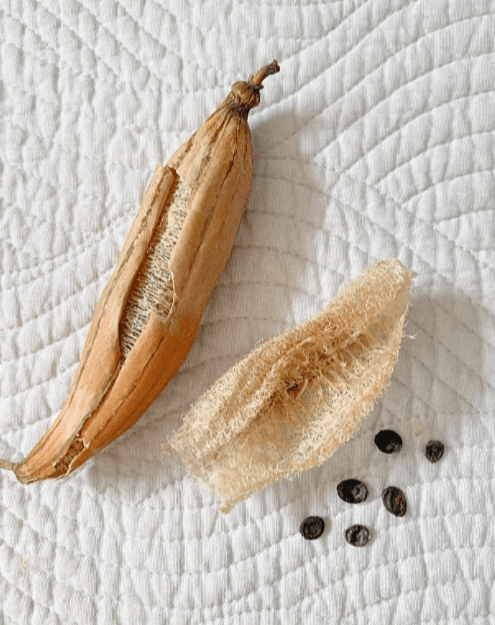
When choosing luffa plant seeds, it’s important to consider the variety of luffa that best suits your needs. Look for seeds of the luffa variety that will produce sponges of the size and texture you desire. Additionally, make sure to select seeds from a reputable supplier to ensure that they are high-quality and healthy. You can also consider purchasing organic or heirloom luffa seeds for a more sustainable and environmentally-friendly option. It’s also a good idea to read reviews and recommendations from other gardeners to help you choose the best seeds for your luffa plant. By taking these factors into consideration, you can ensure that you are starting with the highest quality luffa plant seeds for a successful and rewarding growing experience.
Discuss where to buy luffa plant seeds (online stores, nurseries, etc.).
When it comes to buying luffa plant seeds, there are a few options to consider. You can purchase luffa plant seeds from online stores that specialize in selling seeds and gardening supplies. Many reputable online retailers offer a wide selection of luffa plant seeds, making it easy to find the variety you’re looking for. Additionally, you can also purchase luffa plant seeds from local nurseries or garden centers. These establishments often carry a variety of seeds and plants, making them a convenient option for purchasing luffa seeds. Another option is to purchase luffa plant seeds from seed catalogs or specialty seed companies. These sources may offer a wider selection of luffa plant varieties and can provide more information on the specific characteristics of each variety. No matter where you choose to buy luffa plant seeds, be sure to research the supplier and read reviews to ensure that you are purchasing high-quality seeds. By selecting the right luffa plant seeds and purchasing them from a reputable source, you can set yourself up for a successful luffa growing experience.
Talk about different varieties of luffa seeds available.
Luffa plant seeds come in a variety of different varieties, giving gardeners the option to choose the best one for their needs. Some popular varieties include Smooth Luffa, Egyptian Luffa, Ridge Luffa, and Angled Luffa. Smooth Luffa is known for its smooth skin and is often used for culinary purposes, while Egyptian Luffa has a thicker skin and is commonly used for making bath sponges. Ridge Luffa, as the name suggests, has ridges on its skin and is often used for culinary purposes as well. Angled Luffa is also known as Chinese okra and is popular for its edible fruits. Each variety of luffa plant seeds has its own unique characteristics and uses, so it’s important to consider what you want to use the luffa for before making a purchase. Additionally, some varieties may be better suited for specific growing conditions, so it’s important to research the different varieties to find the best fit for your garden. Whether you’re looking to grow luffa for culinary purposes, as a natural sponge, or simply as a unique addition to your garden, there is a variety of luffa plant seeds available to meet your needs.
Preparing for Planting
Detail the steps to prepare the soil and planting area for luffa seeds.
To prepare the soil and planting area for luffa seeds, you will need to start by selecting a location that receives full sunlight and has well-drained soil. It’s important to ensure that the soil is rich in organic matter, so you may need to add compost or well-rotted manure to the planting area.
Once you have selected the location, you will need to prepare the soil by loosening it to a depth of about 12 inches. Remove any weeds or debris from the area and then create rows in the soil spaced about 6 to 8 feet apart.
Next, you can sow the luffa seeds at a depth of about 1 inch and space them about 12 inches apart within the rows. Be sure to water the seeds thoroughly after planting to help them establish in the soil.
It’s also a good idea to add a layer of mulch to the planting area to help retain moisture and keep the soil temperature consistent. This will also help to prevent weed growth around the luffa plants.
As the luffa plants grow, you may need to provide support for them to climb. You can use a trellis or other support system to help the vines grow vertically and prevent the luffas from touching the ground, which can help to prevent rotting.
By following these steps to prepare the soil and planting area for luffa seeds, you can create an ideal growing environment for your luffa plants and increase your chances of a successful harvest.
Discuss the ideal climate and conditions for growing luffa plants.
Luffa plants thrive in warm, sunny climates and require well-drained soil with a pH level between 6.0 and 7.5. They need a growing season of at least 150 days of warm weather to produce mature luffa sponges. The ideal temperature for luffa plants is between 70-85 degrees Fahrenheit. It is important to ensure that the soil is consistently moist but not waterlogged, as luffa plants do not tolerate standing water. In terms of climate, luffa plants are best grown in areas with a long, warm growing season, such as the southern United States, the Caribbean, or other tropical and subtropical regions. Adequate sunlight and warmth are crucial for the successful growth of luffa plants, and they will not tolerate frost or cold temperatures. By providing the right climate and conditions, you can create an optimal environment for growing healthy and productive luffa plants.
Explain the importance of soil quality and sunlight.
Soil quality and sunlight are essential factors for the successful growth of luffa plants. Luffa plants require well-drained soil with a pH level between 6.0 and 7.5. It is important to ensure that the soil is consistently moist but not waterlogged, as luffa plants do not tolerate standing water. Adequate sunlight is also crucial for the successful growth of luffa plants. Luffa plants thrive in warm, sunny climates and need a growing season of at least 150 days of warm weather to produce mature luffa sponges. The ideal temperature for luffa plants is between 70-85 degrees Fahrenheit. In terms of climate, luffa plants are best grown in areas with a long, warm growing season, such as the southern United States, the Caribbean, or other tropical and subtropical regions. By providing the right climate and conditions, you can create an optimal environment for growing healthy and productive luffa plants. So, it is important to pay attention to soil quality and sunlight when growing luffa plants to ensure their successful growth and development.
Planting Luffa Seeds
Step-by-step guide on how to plant luffa seeds.
- Start by preparing the soil. Luffa plants thrive in well-drained, fertile soil with a pH level of 6.0 to 7.5. Ensure that the soil is loose and free of any debris that may obstruct the growth of the plants.
- Plant the luffa seeds in the soil at a depth of about 1 inch. Space the seeds about 12 inches apart to allow for adequate growth and development.
- Water the planted seeds thoroughly to ensure that the soil is moist, but not waterlogged. Luffa plants require consistent moisture for successful growth, so be sure to water them regularly.
- Place the planted seeds in a location that receives ample sunlight. Luffa plants require at least 6-8 hours of sunlight per day to thrive, so choose a sunny spot for optimal growth.
- As the luffa plants begin to grow, provide support for them to climb. Luffa plants are vines and will require a trellis or other support structure to grow upward.
- Monitor the growth of the luffa plants and continue to water them regularly. As they grow, you may need to prune the plants to encourage healthy growth and development.
By following these steps and providing the right conditions for the luffa plants, you can successfully grow and harvest your own luffa sponges. With proper care and attention, you can enjoy the benefits of homegrown luffa for use in a variety of applications.
Tips on spacing, depth, and watering during the initial planting phase.
When planting luffa seeds, it’s important to space them out properly to allow for optimal growth. Plant the seeds about 12-18 inches apart in well-drained soil, and make sure to plant them at a depth of about 1 inch. Once the seeds are planted, be sure to water them thoroughly to ensure that the soil remains moist. As the luffa plants begin to grow, they will require regular watering, particularly during hot and dry weather. Be sure to monitor the soil moisture and adjust your watering schedule accordingly. Additionally, luffa plants require at least 6-8 hours of sunlight per day to thrive, so be sure to choose a sunny spot for optimal growth.
As the luffa plants begin to grow, they will need some support to climb. Luffa plants are vines and will require a trellis or other support structure to grow upward. Be sure to provide this support to help the plants grow and thrive. As the plants continue to grow, you may need to prune them to encourage healthy growth and development. By providing the right conditions and care for your luffa plants, you can successfully grow and harvest your own luffa sponges. With proper attention and maintenance, you can enjoy the benefits of homegrown luffa for use in a variety of applications.
Discuss germination time and what to expect during the early growth stages.
When growing luffa plants, it’s important to be aware of the germination time and what to expect during the early growth stages. Luffa seeds typically take about 7-10 days to germinate, so be patient as you wait for them to sprout. Once the seeds have germinated, you can expect the plants to begin growing rapidly. As they grow, the plants will develop large, green leaves and start to climb if provided with the necessary support. It’s important to provide the luffa plants with a trellis or other support structure to climb, as they are vines that require something to latch onto. As the plants continue to grow, you may need to prune them to encourage healthy growth and prevent overcrowding. With proper care and attention, you can expect your luffa plants to produce fruit within 70-80 days. It’s important to provide at least 6-8 hours of sunlight per day for the plants to thrive, so be sure to choose a sunny spot for optimal growth. By understanding the germination time and early growth stages of luffa plants, you can effectively cultivate and harvest your own luffa sponges.
Caring for Luffa Plants
Detailed care guide including watering, fertilizing, and pest control.
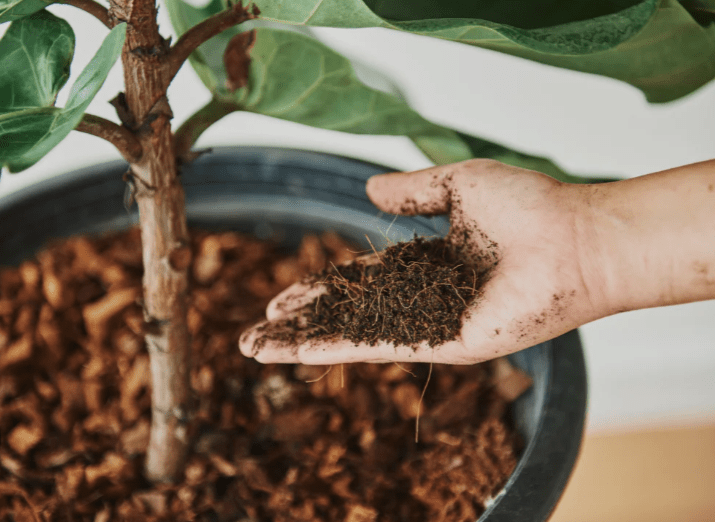
Once the seeds have germinated, you can expect the plants to begin growing rapidly. As they grow, the plants will develop large, green leaves and start to climb if provided with the necessary support. It’s important to provide the luffa plants with a trellis or other support structure to climb, as they are vines that require something to latch onto. As the plants continue to grow, you may need to prune them to encourage healthy growth and prevent overcrowding. With proper care and attention, you can expect your luffa plants to produce fruit within 70-80 days.
When it comes to watering, luffa plants require regular watering, especially during periods of hot, dry weather. It’s important to keep the soil consistently moist, but not waterlogged. Additionally, you can fertilize the soil with a balanced fertilizer to promote healthy growth. Be sure to follow the instructions on the fertilizer packaging for best results.
Pest control is also important when caring for luffa plants. Keep an eye out for common pests such as aphids, spider mites, and caterpillars, and take appropriate measures to control them. This may include using insecticidal soap or other natural pest control methods.
By providing the proper care and attention to your luffa plants, you can expect a bountiful harvest of luffa sponges. Remember to provide at least 6-8 hours of sunlight per day for the plants to thrive, so be sure to choose a sunny spot for optimal growth. With a detailed care guide including watering, fertilizing, and pest control, you can successfully cultivate and harvest your own luffa sponges.
Tips on supporting and training the vines as they grow.
When it comes to supporting and training the vines of luffa plants as they grow, there are a few key tips to keep in mind. First, be sure to provide a trellis or other support system for the vines to climb. This will help to keep the vines off the ground and prevent them from becoming tangled or damaged. You can use a sturdy trellis or even create a simple structure using bamboo poles or other materials.
Additionally, it’s important to regularly prune and train the vines as they grow. This will help to promote healthy growth and ensure that the vines are able to produce an abundant harvest of luffa sponges. You can gently guide the vines along the trellis or support system as they grow, and prune any excess growth to encourage the development of strong, healthy vines.
In terms of care, be sure to follow the instructions on the fertilizer packaging for best results. Pest control is also important when caring for luffa plants. Keep an eye out for common pests such as aphids, spider mites, and caterpillars, and take appropriate measures to control them. This may include using insecticidal soap or other natural pest control methods.
Finally, be sure to provide at least 6-8 hours of sunlight per day for the plants to thrive, so be sure to choose a sunny spot for optimal growth. By providing the proper care and attention to your luffa plants, you can expect a bountiful harvest of luffa sponges. With a detailed care guide including watering, fertilizing, and pest control, you can successfully cultivate and harvest your own luffa sponges.
Harvesting Luffa Fruits
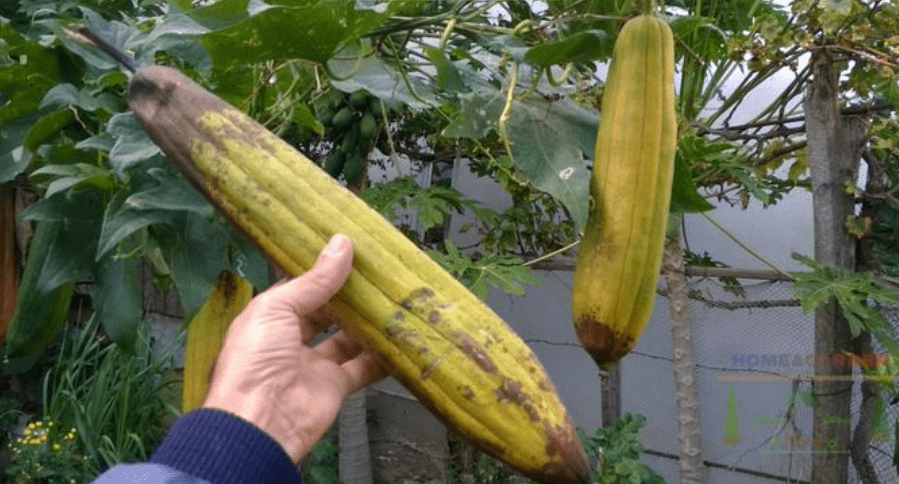
is a rewarding and fulfilling experience. When it comes to caring for luffa plants, it’s important to follow a few key steps to ensure a successful harvest. First, be sure to provide the plants with plenty of water. Luffa plants require regular watering to thrive, so be sure to keep the soil consistently moist. In terms of care, be sure to follow the instructions on the fertilizer packaging for best results. Pest control is also important when caring for luffa plants. Keep an eye out for common pests such as aphids, spider mites, and caterpillars, and take appropriate measures to control them. This may include using insecticidal soap or other natural pest control methods. Finally, be sure to provide at least 6-8 hours of sunlight per day for the plants to thrive, so be sure to choose a sunny spot for optimal growth. By providing the proper care and attention to your luffa plants, you can expect a bountiful harvest of luffa sponges. With a detailed care guide including watering, fertilizing, and pest control, you can successfully cultivate and harvest your own luffa sponges.
Extracting and Saving Luffa Plant Seeds
To extract and save luffa plant seeds, start by harvesting the mature luffa gourds from the vine. Allow the gourds to fully mature on the vine before harvesting, as this will ensure that the seeds are fully developed. Once the gourds are harvested, cut them open and remove the seeds from the fibrous interior. Rinse the seeds thoroughly to remove any remaining pulp and then lay them out to dry in a well-ventilated area. Once the seeds are completely dry, store them in a cool, dry place in an airtight container. Label the container with the date and type of seeds for easy identification. By following these steps, you can successfully extract and save luffa plant seeds for future planting.
In conclusion, growing and harvesting luffa plant seeds can be a rewarding and enjoyable experience. By following the steps outlined in this guide, you can successfully grow and harvest your own luffa plant seeds for future planting. Additionally, you can also use the luffa plant itself for various purposes, such as exfoliating sponges or natural scrubbers. Overall, growing luffa plants can be a fun and sustainable addition to your gardening endeavors.
Frequently asked questions And Answer
The best time to plant luffa seeds is in the spring, after the last frost has passed and the soil has warmed up.
Luffa seeds should be planted in well-draining soil, about 1 inch deep and 12 inches apart. They need plenty of sunlight and warm temperatures to thrive.
Luffa seeds typically take 7-14 days to germinate, depending on the soil temperature and moisture levels.
Luffa fruits can be harvested once they have turned brown and feel lightweight. This usually occurs in the fall, around 150-200 days after planting.
To harvest luffa seeds, cut the fruits from the vine and allow them to dry out completely. Once dry, you can remove the outer skin and shake out the seeds
Luffa seeds should be stored in a cool, dry place in an airtight container. Properly stored seeds can remain viable for several years.
Luffa seeds are not typically eaten, as they can be toxic if not prepared properly. They are best used for growing new luffa plants.
Yes, luffa plants can be grown in large containers with proper support for the vines to climb. Just make sure the container has good drainage and is placed in a sunny location.
